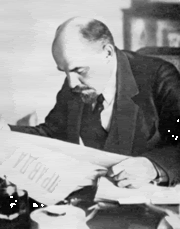The straw man argument:
"In this tactic, a person summarizes the opposition’s position inaccurately so as to weaken it and then refutes that inaccurate rendition."In the article:
The weak man argument:News shows often have an implicit bias that may motivate the portrayal of facts and opinions in misleading ways, even if the information presented is largely accurate. Nevertheless, by becoming familiar with how spokespeople can create false impressions, media consumers can learn to ignore certain claims and thereby avoid getting duped. We have detected two general types of fallacies—one of them well known and the other newly identified—that have permeated discussion of the Iraq War and that are generally ubiquitous in political debates and other discourse.
Spinning Straw into Fool’s Gold
One common method of spinning information is the so-called straw man argument. In this tactic, a person summarizes the opposition’s position inaccurately so as to weaken it and then refutes that inaccurate rendition. In a November 2005 speech, for example, President George W. Bush responded to questions about pulling troops out of Iraq by saying, “We’ve heard some people say, pull them out right now. That’s a huge mistake. It’d be a terrible mistake. It sends a bad message to our troops, and it sends a bad message to our enemy, and it sends a bad message to the Iraqis.” The statement that unnamed “people” are advocating a troop withdrawal from Iraq “right now” is a straw man, because it exaggerates the opposing viewpoint. Not even the most stalwart Bush adversaries backed an immediate troop withdrawal. Most proposed that the soldiers be sent home over several months, a more reasonable and persuasive plan that Bush undercut with his straw man.
"Recently, in a 2006 paper co-authored with Scott F. Aikin, one of us (Talisse) documented a twist on the straw man tactic. In what Talisse dubs a weak man argument, a person sets up the opposition’s weakest (or one of its weakest) arguments or proponents for attack, as opposed to misstating a rival’s position as the straw man argument does."In the article:
The truth, the facts are out there. They just need to be found under all the froth and blather, the idiocy that passes for journalism nowadays. Ask questions, be sceptical, find out who is writing the article...Weak man arguments are pervasive. In a 2005 editorial in Denver’s Rocky Mountain News, conservative writer and activist David Horowitz picked on ethnic studies scholar Ward Churchill, formerly at the University of Colorado at Boulder, whose views he described as “hateful and ignorant.” Horowitz then went on to claim that Churchill’s radical “hate America” convictions “represent” those of a “substantial segment of the academic community.” Thus, he used the example of Churchill (the weak man) to argue that “tenured radicals” have made universities into leftist political institutions and subverted the academic enterprise, thereby failing to acknowledge the presence of more highly regarded and politically mainstream scholars in academia.
Trolling for Truth
Weak man tactics are harder to detect than those of the straw man variety. Because straw man arguments are closely related to an opponent’s true position, a clever listener might be able to spot the truth amid the hyperbole, understatement or other corrupted version of that view. A weak man argument, however, is more opaque because it contains a grain of truth and often bears little similarity to the stronger arguments that should also be presented. Therefore, a listener has to know a lot more about the situation to imagine the information that a speaker or writer has cleverly disregarded.Nevertheless, an astute consumer of the news can catch many straw man and weak man fallacies by knowing how they work. Another strategy is to always consider a speaker’s or writer’s motivation or agenda and be especially alert for skewed statements of fact in editorials, television opinion shows, and the like. It is also wise to obtain news from more balanced news sources. An alternative approach is to try to construct, in your own mind, the best argument against what you have heard before accepting it as true. Or simply ask yourself: Why should I not believe this?

No comments:
Post a Comment